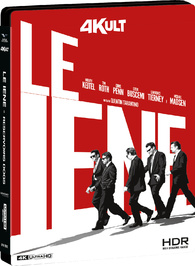Quote:
Originally Posted by Geoff D

What does budget have to do with it? The movie would never have looked as good as the 4K does in cinemas, even if they could projekt a flat print, because it’d be at least one generation removed from the negative anyway. Again: movies are not transferred from anamorphic INs or prints but the flat neg or IP. Even the VHS transfers were routinely derived from flat elements.
|
I think in the article they say they wanted to shoot in anamorphic but couldn’t afford it, so they shot in spherical. They say it would have looked better if they were allowed to shoot in anamorphic to begin with. Unless I have misunderstood it.
“With Super 35, the anamorphic squeeze is done in postproduction,” he continues. “We went from the original print to an interpositive and internegative [at Foto-Kem] for release, and then we did the anamorphic squeeze at Deluxe. The whole film was one big optical, and one aspect of that was heartbreaking: the loss of quality [in the squeezing process] was apparent. That’s just the nature of the process. The original print was so clear that you could see the structure of the actor’s eyes. You could still see some of that detail after the squeeze, but a bit of the magic was gone. If I could have chosen, I would have gone with anamorphic in the first place, but it was impossible on our budget.”
I do however agree with your point, because even if they were, it still wouldn’t look as good as the current 4K which is struck directly from the OCN.

























 Linear Mode
Linear Mode

